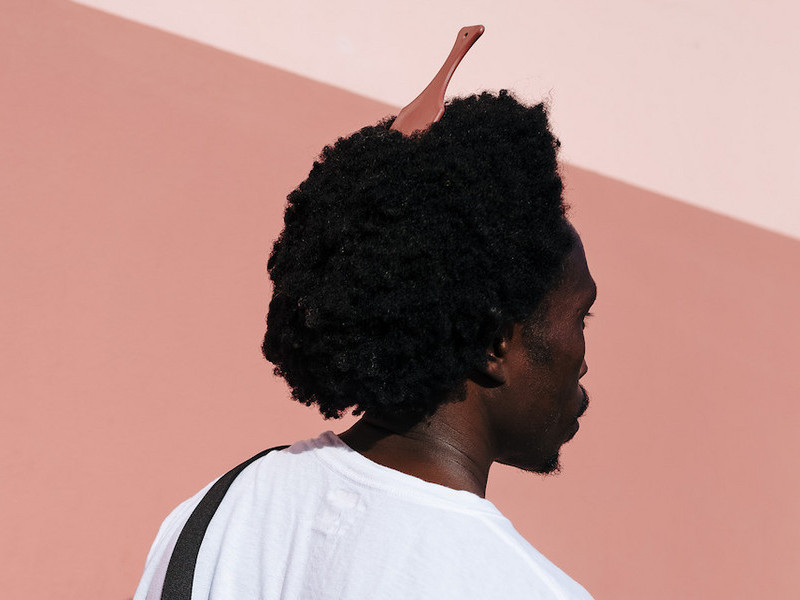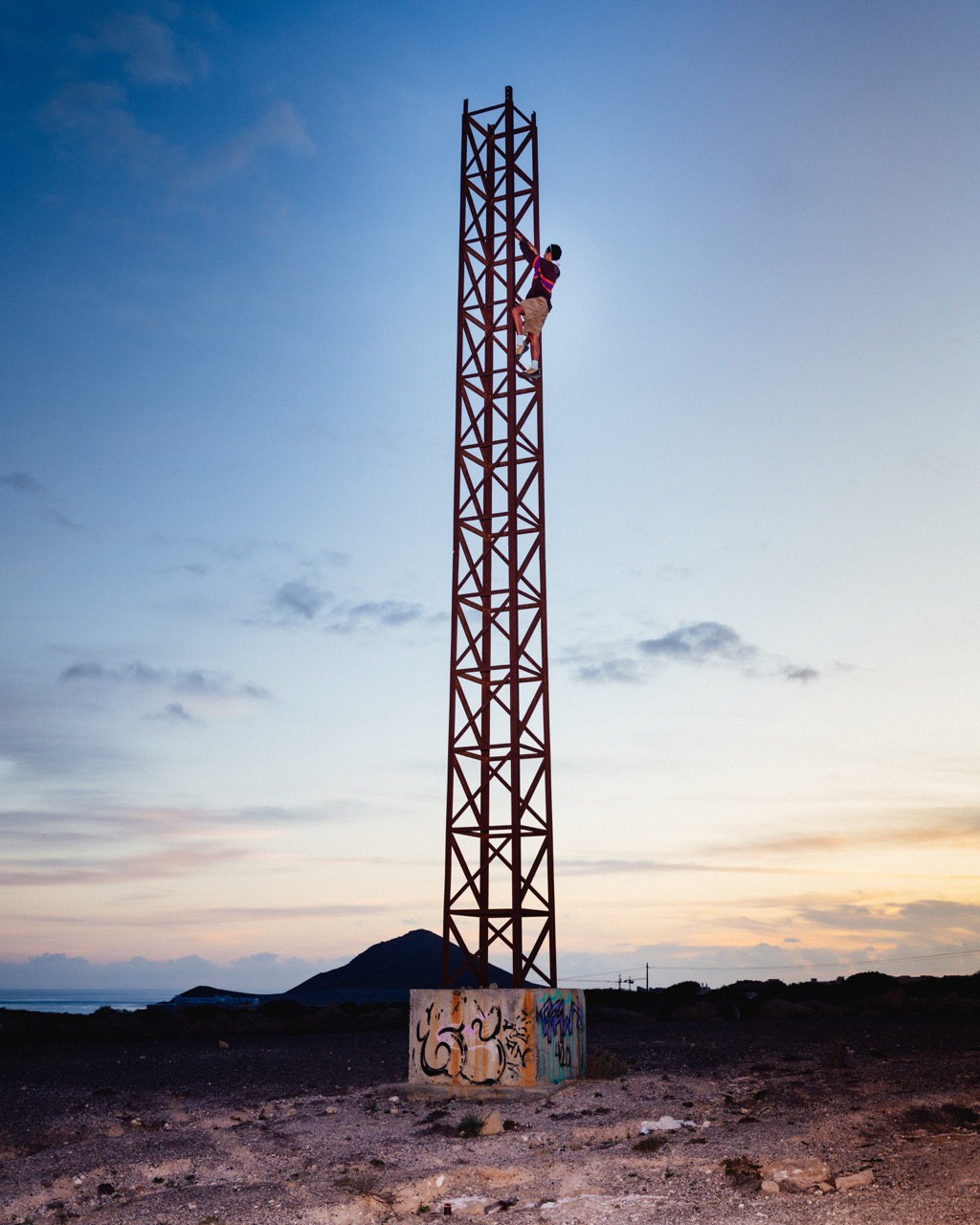Finding Harmony in Tension with Fai Khadra
His motivations could not be made more evident than in the images from the campaign for the collaboration, starring Jordan Daniels and Fai himself. Comte's stunning black and white portraits and motion shots convey a polished elegance in throws with a pent-up recklessness. Such a balanced conflict is precisely what Fai has in mind. As he shares, "the things that are most interesting exist when there's a tension between them, yet they are somehow able to blend harmoniously."
Read the exclusive interview with Fai below.
Congratulations on your new collaboration with Oliver Peoples.
Thank you so much. It's my first time designing eyewear, so it was really fun to take on the challenge and try to create something that felt unique to me. I also wanted to push the boundaries of what Oliver Peoples is able to do and what they stand for as well. It was interesting to get that conversation started. This has been almost eight months in the works and it has been a very detail-oriented experience. A lot of different journeys encapsulated in it all.
Having gone to school for architecture, where do you see the most distinct parallels between fashion and architecture when it comes to designing?
I was just actually with a friend of mine who also went to architecture school, and we were saying how, if you want to do anything in design, we really think the best education you could get is going to architecture school. Even when presenting drawings or projects or even creating a layout, picking the fonts, and you know, choosing how to present these images: it’s all graphic design and questioning whether it fulfills the purpose it was designed for. You have to switch between thinking of things aesthetically, and also thinking of things functionally. And so I think I've kind of approached this collaboration with a similar mindset.
Given that mindset, what was starting the process of this collaboration like?
I've never designed eyewear and my entry point into this collaboration wasn't necessarily how the glasses were going to look, but more of what feeling or story or aesthetic is being conveyed. You can see a lot of references to artists I love, whether it be Robert Longo or Richard Avedon. I was also really thinking about this kind of rock and roll, LA in the 90s, Pamela Anderson and Tommy Lee aesthetic. Something kind of reckless.
Something I find really fascinating about the designs is the corewire in the frame emulating the look of barbed wire. Where did the idea for that come from?
You know the kind of classic barbed wire tattoo that many people had in the 90s? It’s that kind of aesthetic and then relating it back to what Oliver Peoples does, which is just really, really beautiful, handcrafted glasses. It was also really fun learning all the technical terms of all these different aspects of the sunglasses, you know. Like the line that’s in the temples is called the corewire and they can do so many interesting things with them technologically and visually. We were able to three-dimensionally create that corewire into looking like barbed wire based on that inspiration.




What kind of other inspirations did you draw from in creating the rest of the frame and the campaign for it?
I was thinking about the polarity of these super clean, really classic images from Robert Longo in free form. That kind of expression mixed with something that was a little bit more rough, like the Pam and Tommy era, which I also just am fascinated by. I wanted to explore how we could bridge that gap. Is there a way to connect those two things that maybe no one thought to connect before? That is kind of how I always think. The things that are most interesting exist when there's a tension between them, yet they are somehow able to blend harmoniously. It creates an interesting tension which could be subliminally felt through the product or through the campaign.
How was the experience of modeling for and creative directing the campaign for the collaboration shot by Hugo Comte?
I am a very holistic person when it comes to a vision, which Oliver Peoples was very accommodating of. I will take over not only just the design of the glasses, but choose the campaign and how the stories are being told, all the way down to the event details for the launch. I designed the event and what it's supposed to look like down to seating assignments. I even designed the tables people will be seated at, so it's a very holistic approach to design which I think is more fun for me. It also tells the story best. When it came to the campaign, Hugo’s a friend of mine, and so is Jordan Daniels, and luckily we were able to get them for the shoot. I didn't design the glasses with any gender in mind. But even the way that Jordan is dressed shows it’s a little bit more masculine, as she's wearing a suit. You know, I'm wearing a suit and there's just kind of this play on the masculine and feminine. Hugo is so great at capturing that vision.
You can see that juxtaposition through the motion shots too. They convey a kind of fluidity which is really intriguing when thinking about what the story of the campaign is.
In a kind of world where we see a lot of colorful images and products, I wanted to do something that felt like the antithesis to that. Oliver Peoples makes such a wide range of glasses but when I first went into the store, I noticed that a lot of the frames are a little larger, and I automatically gravitated to doing something that was the opposite. We started to think about these more sleek and thin forms and from there developed what the eventual shape became. Oliver Peoples is also such a classic heritage brand, and I wanted to keep that essence by creating something that felt timeless, yet engaging a different kind of energy that may be more daring.



I read that there were references to a vintage frame in the design process. What kind of other materials were sourced as reference in the creation of this collection?
We initially took a 3D model of my face and then started playing around with different shapes on the computer, without even looking at anything in reality. While we were doing that, I also would just go around and look for different source materials. I would find different shapes and different lenses, and then we kind of collaged those things until we reached what would eventually become the final product.
Thinking conceptually about the glasses out in the world, what is one city or location anywhere at all that you think is most representative of the aesthetic and ethos of this collaboration?
For me, there is a very strong feeling of LA in the 90s.
It’s interesting to hear you say that because my first impression was of a more mid-century, European, Brutalist aesthetic. Especially with the narrow, angular frame and the barbed corewire.
I love that people are going to get different feelings from looking at them and wearing them out. What I said is only my feeling of it. It's not the correct feeling. It was just my interpretation, but I would love for people to have their own interpretation and their own kind of experience with them. I love that that's what you got when you saw them because I love all those things too. I love industrial looking things and brutalist architecture. I wanted to explore how to mix it with something that is maybe a little sleeker and more refined.
Explore Fai Khadra's collaboration with Oliver Peoples here.











































